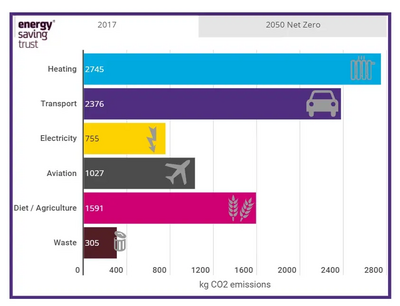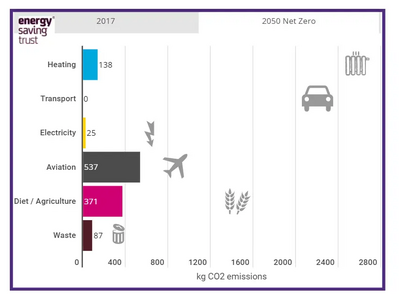Greener homes, greener world

As Liberal Democrats in Hertsmere, we are committed to playing our part in tackling climate change. Our councillors have been the driving force behind new local requirements for solar PV panels and sustainability criteria for new builds. We've also helped negotiate extensive solar-panelling and other eco-measures for the new Sky Studios complex in Borehamwood.
But we also believe it's worth reflecting on what each of us can do, in our everyday lives, that could make a difference. Sometimes - given the global scale of the problem - that might feel a little futile. Small, individual acts can feel like a drop in the ocean. But the reality is that if millions of us do a little thing, it soon adds up to a very big thing.
And now there's some extra help available to make changes in the way we live - which will not only reduce our household's carbon emissions, but help reduce our energy bills, too.
In September, the government rolled out a new scheme called Green Home Grants. These are designed to cover the bulk of the costs involved in retro-fitting your house or flat to make it much more energy-efficient. They don't even require lifestyle changes, and significantly reduce the long payback time often associated with this kind of work. And I believe that, while these grants do come with constraints, they provide the best opportunity we have, as householders, to do the right thing.
In this article, I'm going to explain how the grants work, how you apply for one, and the real impact they can make, both for your home, and the environment. But first, for context, I'm going to outline the wider issues at stake.
What does 'net zero by 2050' mean?
Increases of average global temperatures have been observed for decades. It is now scientifically proven that greenhouse gas emissions are the main factor and human activities are a primary source. 97% of scientists studying the topic agree that humans are causing global warming and climate change.
The UK recently adopted a target of 2050 to reach Net Zero carbon emissions, in line with limiting average temperature increases to 1.5C by 2050.
To achieve this target the government needs to proactively introduce a range of measures that will reduce the amount of emissions generated from how we heat our homes, using our cars, growing our food and generating energy across the board. These tables below from the Energy Savings Trust indicate how yearly carbon emissions need to be reduced per source category so that we reach the 2050 Net Zero target. For heating, the required reduction per capita is 95%.

(2017 UK average household CO2 emissions in kg - based on Energy Systems Catapult analysis)

(Required 2050 UK average household CO2 emissions in kg - based on Energy Systems Catapult analysis)
This report highlights focus areas for homeowners and relevant incentives.
Schemes relevant to homeowners - thermal
The rate of climate change can be reduced and there many actions each of us can take.
Following from work from various organisations like the Committee on Climate Change, a number of initiatives are now planned and underway: Make buildings fit for the future: major infrastructure programmes are needed in every nation of the UK to decarbonise buildings, including making all homes energy efficient by 2030 and accelerating adoption of heat pumps. This can deliver huge economic benefits and was projected to generate over 100,000 jobs. It can build economic resilience by reducing energy bills, which will lead to increased economic demand, whilst tackling fuel poverty, improving the health of residents, reducing NHS costs and slashing carbon emissions.
A few years ago, Hertfordshire 'Green Our Herts' published a Home Insulation Guide. Hertsmere Council declared a climate emergency and is now working on a Climate Change and Sustainability Strategy.
The new Green Homes Grant scheme
As you probably know, the Chancellor recently announced new subsidies to help house owners and local authorities to upgrade the thermal efficiency of the housing stock. It is expected that 25% of this initial investment will be available to local authorities, with the rest being for homeowners. These grants aim to deliver thermal efficiency improvements.
Given that some of the housing in Hertsmere appears to have solid rather than cavity walls and the known restrictions in the use of cavity wall insulation, one could expect external wall insulation (EWI) to be a common option for residents to consider in the next few years. Generally this upgrade does not require planning permission.

(Example EWI retrofit, reducing home's total energy demand by 80 per cent).
The operation of the new Green Homes Grant is different from previous schemes. It requires traders to be TrustMark Registered Businesses.
In a recent statement about the scheme, the Department for Business, Energy & Industrial Strategy (BEIS), promised consumers will be able to use a business from their local area to carry out these energy-efficient measures in and around their homes.
In short, consumers will be given vouchers for various "primary" and "secondary" measures.
Primary ones include:
- solid wall, under-floor, cavity wall or roof insulation
- air source or ground source heat pump, solar thermal
In addition, households can also use their voucher for further "secondary" measures like:
- double or triple glazing/secondary glazing, when replacing single glazing
- upgrading to energy-efficient (external) doors
- hot water tank/appliance tank thermostats/heating controls.
The value of the vouchers will cover 66% of the cost with a limit of £5k (or up to 100% and £10k in case any member of the household receives qualifying benefits). They will be issued starting in Nov 2020 and they must be redeemed by 31 March 2021. The latest details on the scheme can be found at https://www.gov.uk/guidance/apply-for-the-green-homes-grant-scheme, where you can apply.
In addition to gains in thermal efficiency, you should consider if options can provide further benefits such as reduced maintenance costs.
What would I need to do?
The first step is to obtain quotes from suitable TrustMark Registered Businesses. Paulo Goncalves, a member of the LibDems can share personal experience of this: the small number of companies in the whole country who can meet the TrustMark requirements quickly stood out as a likely issue. After selecting quotes and making sure the traders can get the work done in time, you also need to apply for the vouchers.
Selecting a building company that subscribed to The Trustmark scheme does not in itself guarantee quality of the work. It goes without saying that when any consumer is choosing a tradesperson and or business, they need to check they are suitable for their project.
Hertfordshire County Council has advice on how to find a trustworthy builder and Simple Energy Advice also highlights what to watch out for when considering different improvements. And finally, when committing to use a particular tradesperson, it is worth confirming if they plan to subcontract the actual installation.
About the authors
Hertsmere Climate Group is a cross party group, established in 2019 to discuss and campaign on climate change issues, establish and encourage local recycling projects and work with the whole community. To find out more about us, or to contact us: paulo@hertsmereclimate.org and www.hertsmereclimategroup.org
